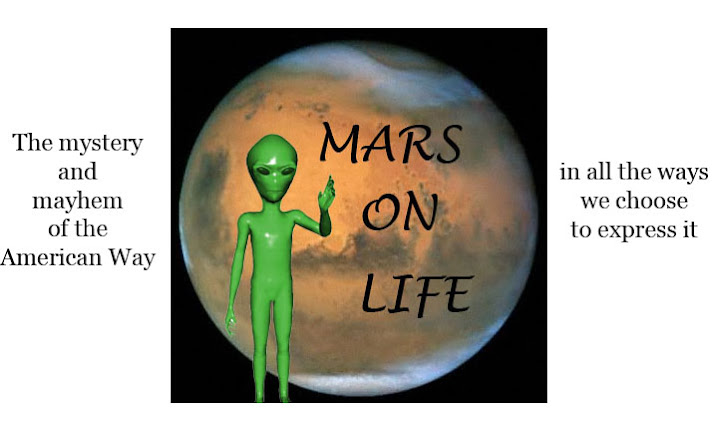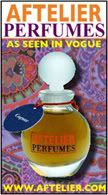
There was a time when London wasn't considered the also-ran fashion "capital" it is today. For a brief period in the mid-sixties, London was Swinging London, the fashion portal of a youth sociocultural movement not quite so politically significant as the hippies but as critical as the Jazz Age in terms of style. If all roads led to Rome in the fifties, in 1966-1967 they led to Carnaby Street and the King's Road.
It was all down hill subsequently.
In some camps, the response to the recent British Fashion Awards underscores London's contemporary plight: There were three models worth nominating for Model of the Year, a supposed paucity that was met with the response, "But who else is there?
Had the BFA's existed 40 years ago, the response would have been the same, but for different reasons. Twiggy was it, Baby. Twiggy would have won the award without batting a black tarantula eyelash. Twiggy and her gnat's limbs were all over Swinging London that summer of 1966, inheriting the Model of the Moment tag from Jean Shrimpton. A year before San Francisco's hallucinogenic Summer of Love, Swinging London was a safe futuristic bubble that traded on gentle political statement and bold, Pop-Art designs.
George Harrison, by 1967 a Sgt. Pepper amb assador of the world's swingingest city, visited Haight Ashbury to investigate the American hippie culture. The hippies were then an organic stateside movement that had as yet to take hold in England. Harrison was perplexed and appalled at the "hideous, spotty little teenagers" who he anticipated would "all own their own little shops" in an area that "would be something like the King's Road, only more." Harrison was wrong; San Francisco was full of urchins, panhandlers, runaways, and speed freaks. His idea of a hippie utopia existed only in imagination, fueled by a desire to separate himself and his peers from conservativ
assador of the world's swingingest city, visited Haight Ashbury to investigate the American hippie culture. The hippies were then an organic stateside movement that had as yet to take hold in England. Harrison was perplexed and appalled at the "hideous, spotty little teenagers" who he anticipated would "all own their own little shops" in an area that "would be something like the King's Road, only more." Harrison was wrong; San Francisco was full of urchins, panhandlers, runaways, and speed freaks. His idea of a hippie utopia existed only in imagination, fueled by a desire to separate himself and his peers from conservativ e and stagnant mid-century values. His view was an innocently narrow one born of his own English experience and his generation's rejection of the civic machine.
e and stagnant mid-century values. His view was an innocently narrow one born of his own English experience and his generation's rejection of the civic machine.
The London that Harrison referred to while dismissing San Francisco was full of boutiques (Granny Takes a Trip; I Was Lord Kitchener's Valet; Lord John) and dolly birds, putative models who looked good in the Biba, Quant, and Ossie Clark fashions and could be counted on to pose for editorial. While some "youthquaker" counterparts existed in America--Baby Jane Holzer, Edie Sedgwick--the Manhattan scene was not a fully encompassing one. Outside of Jean Shrimpton and Twiggy, the most visible of the dolly bird models held hands with the most popular bands of the day: The Rolling Stones and The Beatles. From these ranks came Chrissie Shrimpton and sisters Pattie and Jenny Boyd, Suki Poitier, Linda Keith, and Jane Asher.
day: The Rolling Stones and The Beatles. From these ranks came Chrissie Shrimpton and sisters Pattie and Jenny Boyd, Suki Poitier, Linda Keith, and Jane Asher.
These girls mostly shared the same long, shining hair, the headbands, and the thick dollop of bangs above the exaggerated kewpie eyes. The modernity of the cosmetic application was in and of itself a fad; no sooner had it taken root in the suburbs than it was replaced by the makeup-less hippie look.
The dolly bird look was heavy on artifice. False lashes, thick eyeliner, wigs and falls were accented by monochromatic Yardley and Quant cosmetics. So theatrical was the look that Marianne Faithful remarked that Chrissie Shrimpton couldn't stay out all night or she'd fall apart. This observation presaged a shift away from the Swinging London era and into the hippie era that would, by 1968, cause Swinging London to be seen as outmoded emblem of an "old" England. Faithful's comment was tinged with scorn; she and Shrimpton were of the same generation, if not the same mindset. Fads and fashions evolve at such aggravated rates of speed that by 1967 Shrimpton and her accoutrements were old-fashioned, and as Jagger put it in song, "Out of Time." Poor Chrissie, Faithful opined, would melt.
were accented by monochromatic Yardley and Quant cosmetics. So theatrical was the look that Marianne Faithful remarked that Chrissie Shrimpton couldn't stay out all night or she'd fall apart. This observation presaged a shift away from the Swinging London era and into the hippie era that would, by 1968, cause Swinging London to be seen as outmoded emblem of an "old" England. Faithful's comment was tinged with scorn; she and Shrimpton were of the same generation, if not the same mindset. Fads and fashions evolve at such aggravated rates of speed that by 1967 Shrimpton and her accoutrements were old-fashioned, and as Jagger put it in song, "Out of Time." Poor Chrissie, Faithful opined, would melt.
Images: Top left--Linda Keith, Chrissie Shrimpton, and Suki Poitier
Top right--Pattie Boyd for Mary Quant
Center left: Chrissie Shrimpton applies dolly bird makeup
Bottom left: Pattie Boyd with the Rolling Stones
Bottom right: Chrissie Shrimpton and Ossie Clark![]()
All image: Mini Mad Mod 60s
Wednesday, December 26, 2007
Carnabetian
Subscribe to:
Post Comments (Atom)









7 comments:
i seriously love reading your blog.
What a great post! This is one of my favorite periods in fashion history, hands down. Mod > hippies.
This is a great post.
It's funny how we both have posted about the 60's at the same time... :)
BB, thematically I get stuck in the sixties and seventies, because I'm...OLD(er). Not that old--I mean, I wasn't launched with the Sputnik, but old enough.
I was not in the least interested in the BFA's. To gloss the point -everything these days is saturated with celebrity and brand name recognition, and this event seemed no different. I agree with you, the whole event seemed rather anti-climactic...
On another note, it's interestint that, as far as I've noticed, for fashion critics, the excitement of fashion begins with this period. That just might mean there is a paucity of information on the earlier periods, even historic costume or some such, without being tedious or entirely formalist.
Riz, I think those points are quite valid and we can probably add to those the age of the critic. And perhaps that--like in the 20s--fashion underwent a huge sea change that made it more intriguing for students of critical thought.
Great post! The last picture with Chrissie and Ossie is one of my favourites.
Post a Comment